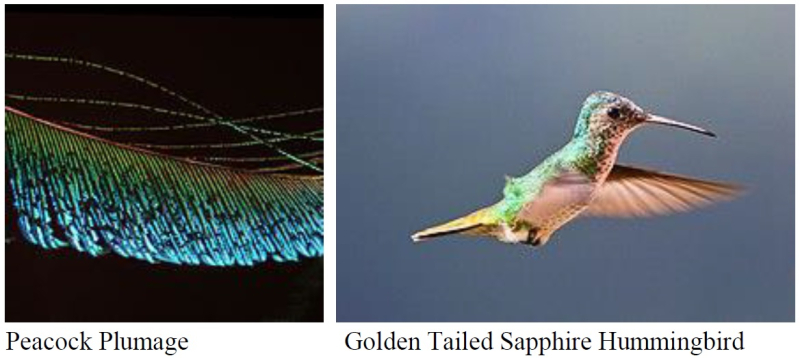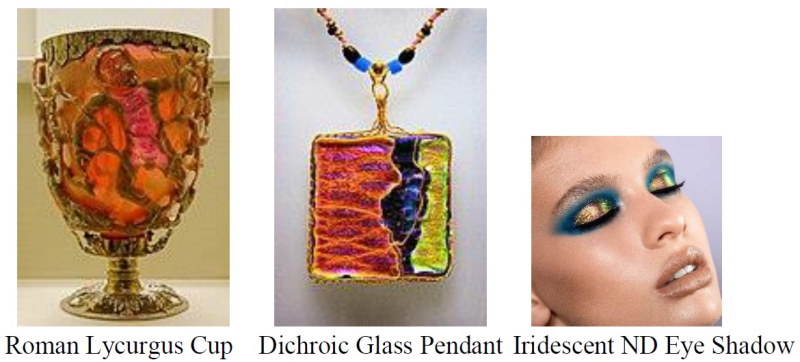Shimmering Iridescence
Today we observe shimmering "Iridescence". The University of Houston presents this series about the machines that make our civilization run, and the people whose ingenuity created them.
“What’s your favorite color Dad?” “Sky blue-pink with a heavenly border”. “But is that a real color?!” “Absolutely, it is the color of the divine: magnificent, scintillating, sublime!”

Iridescence, or the optical phenomenon of changing colors, comes from the ancient Greek deity Iris, goddess of the rainbow. It also refers to the colored portion of our eyes. Iris is frequently depicted with a colorful diaphanous cloak arcing above her head, and is linked to a dewy sky. The association of iridescence with rainbows, sun bows, moon halos or Northern Lights is accounted for by the complexity of our visual color perception. Rainbows and moon halos are produced by sunlight being refracted prismatically through millions of microscopic water particles in the air. Conversely, the Northern Lights at night in higher altitudes are produced by solar flares and the Earth’s magnetic field charging elemental particles in the air. These undulating waves of color are spectroscopically characteristic of the specific elements present. The primeval awe human beings experience at heavenly phenomena is a wellspring of our spirituality; shimmering hues signal magic in the human mind.

Nature also provides us with iridescence in the way light reflects off micro-structures in the animal kingdom, such as in the luminescent feathers of hummingbirds and peacocks, the glimmering scales of neon tetra, or the carapaces of scarab beetles. It also occurs when viewing minerals such as with opals, pearls, Labradorite or Alexandrite, which change color with differing reflected wavelengths of light. Iridescence can also be perceived in the color-changing skin chromatophores of chameleons and octopuses as they seek to camouflage themselves.

Our infatuation with iridescence has only increased the desire to produce the effect through science. Dichroic or dually-colored glass was developed by the aerospace industry for NASA’s application in optical filters. Iridescent, mica-based, interference pigments for painting and the automotive industry, are also recent developments in chemical engineering. (Interestingly though, the Romans had also produced dichroic glass in the 4th Century in the Lycurgus Cup). These pigments and glasses allow us to wear chromatic glass jewelry, or apply color-shifting cosmetics such as eyeshadows, lipsticks and nail polishes, to make jewel-toned human ornamentation glow as vividly as any rare bird’s plumage
Or as Emily Dickinson would say, provide us with “A Route of Evanescence”.
I'm Celeste Williams for the University of Houston where we are interested in the way inventive minds work.
(Theme Music)
Jarman, Derek, Chroma, A Book of Color, University of Minnesota Press, Minneapolis, MN, 2007.
Berthier, Serge, Iridescences, The Physical Colors of Insects, Springer Press, New York, NY, 2007.
Perryman, Laura, The Color Bible, Prestel Press, Munich, Germany, 2021.
Wikipedia, Iridescence, www.wikipedia.org, accessed April 2025.
Wikipedia, Dichroism, www.wikipedia.org accessed April 2025.
This episode first aired May 13, 2025.